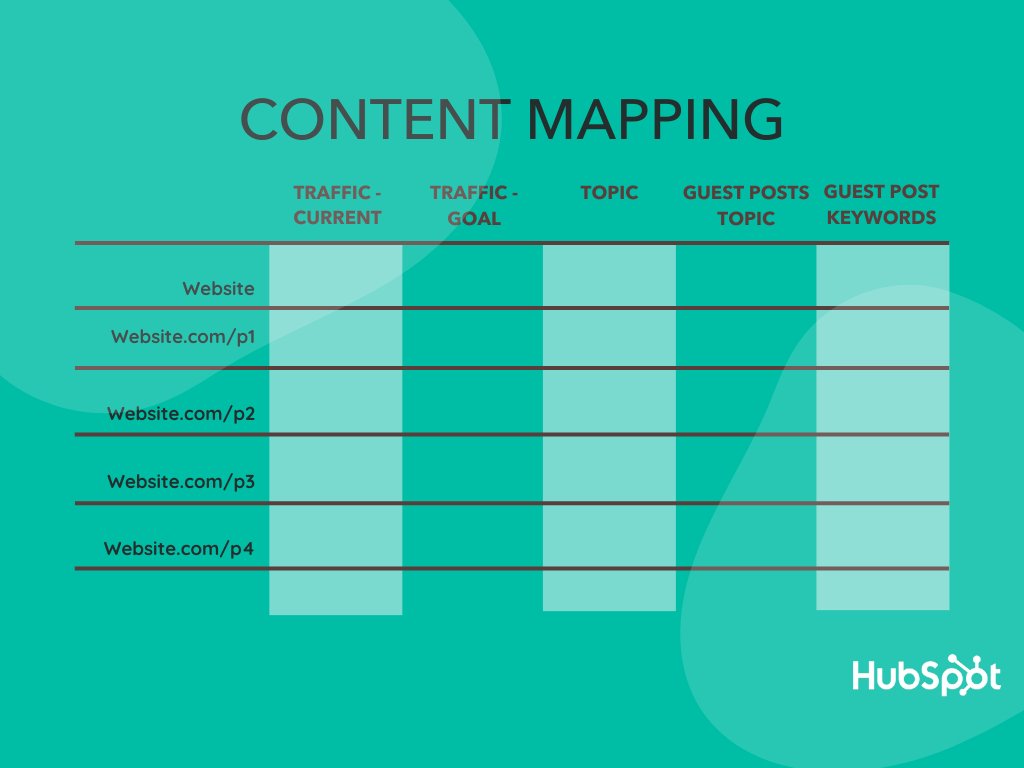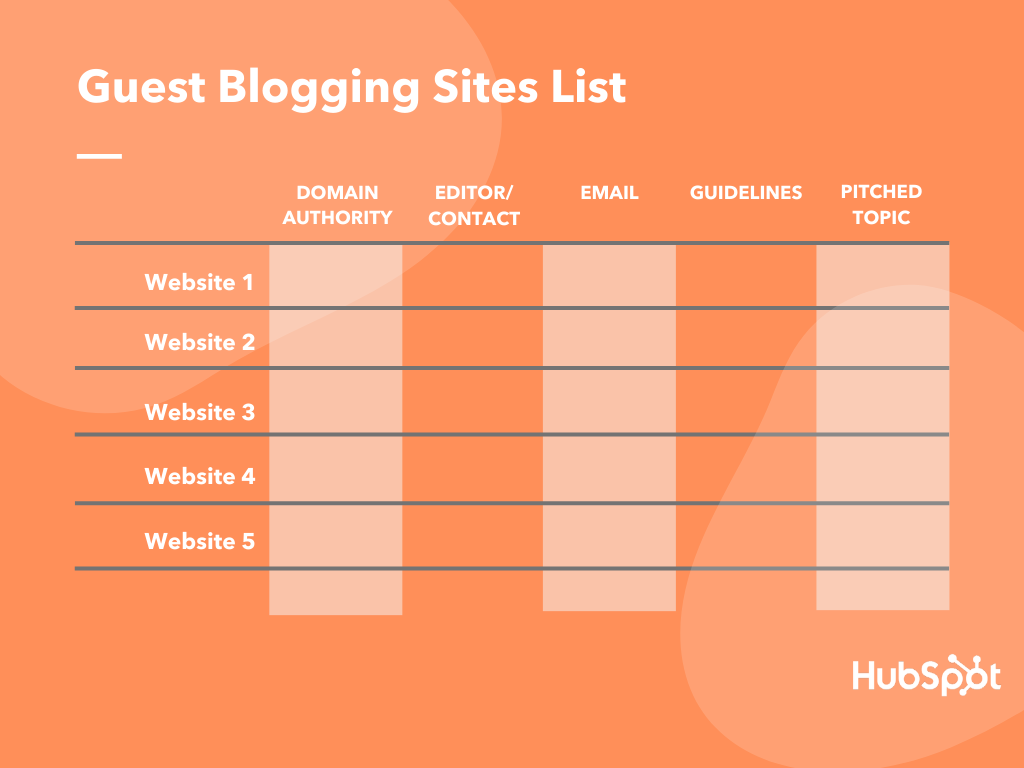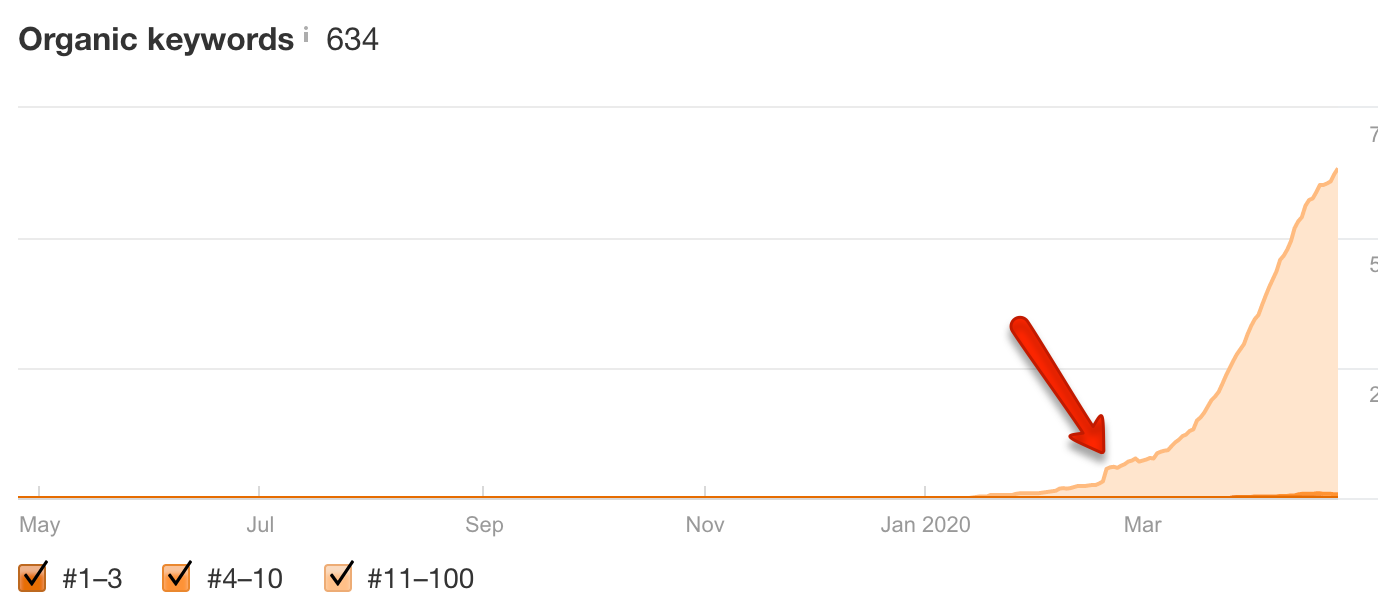If you're looking for the best way to divide a room full of marketers, bring up the topic of guest blogging.
Without a doubt, you'll start a heated debate. Some will say it's a waste of time. Others will swear by it and treat it like an essential part of their marketing strategy.
As always, the truth is somewhere in the middle: yes, it can be a waste of time and resources, but, done right, it can be a powerful fuel for your growth. Aside from the brand awareness aspect of it, guest blogging can also be an ethical and sustainable way to build high-quality backlinks and improve your SEO performance.
That's why I wanted to create this comprehensive guide to guest blogging that anyone, from any industry, can start using right away.
Here you'll learn the essential steps to creating a successful strategy:
- Set specific, achievable goals.
- Choose topics that will benefit your own business goals.
- Find reputable guest blogging sites.
- Conduct guest blogging outreach.
- Write the post.
- Track your posts' results over time.
But before we dive into the strategy, let's first define what guest blogging really is.
What is guest blogging?
Guest blogging is a content marketing tactic that involves writing and publishing one or more articles for other websites.
These articles include your byline and, often times, are highlighted by the editor of that website (or publication) as being written by a "guest author" or a "contributor".
Depending on the publication, you might receive compensation for your guest blogging efforts. However, that's not always the case.
Some publications will offer non-monetary rewards for your post, instead, like a link back to your personal website or social media accounts.
Let's dive into a few major benefits of guest blogging:
Benefits of Guest Blogging
Here are some of the biggest benefits people get from guest blogging:
-
Build a profile as an industry expert/thought leader
-
Grow your personal brand
-
Grow an audience (social followers, subscribers etc.)
-
Improve SEO performance
-
Build authoritative backlinks
-
Build relationships and drive new partnerships e.g. co-marketing partnerships, job offers
-
Drive referral traffic
-
Improve a company's brand awareness
-
Get more leads, users and even customers
Now that we've covered that, let's dive-deep into each step of the guest blogging process if you want to become a successful guest blogger for major publications.
How to Become a Successful Guest Blogger
1. Set specific, achievable goals.
The first step to start a successful guest blogging process is to set attainable, measurable goals.
These goals might be related to your business performance (like getting more leads or clients) or your website performance (like improving your search visibility or your referral traffic).
Whatever your goal is, make it SMART. When you have a clear goal, it becomes much easier to the pick topics you write about, the blogs where you want to publish, how frequently you write, and so on. Most importantly, a SMART goal will tell you if this tactic is right for your business and how much you should invest in it in the future.
If you're just getting started, here are five examples of measurable goals you can set:
-
Get X referral visits from your guest posts OR Increase referral traffic by X% from your guest posts
-
Get X leads from referral traffic from your guest posts OR Increase the number of leads from from your guest posts by X%
-
Get X clients from your guest posts OR Increase clients from your guest posts by X%
-
Improve your SEO performance or SERP visibility by X%
-
Get X number of high-quality backlinks to relevant content from your guest posts
My personal preference is to set goals around referral visits, SEO traffic, and backlinks. A change in these metrics can be somewhat easily traced back to guest posts. Clients and leads are obviously more important for the business and can be influenced by guest blogging, but correct attribution can be a challenge.
Next let's talk about keyword research and how that fuels the content creation process.
2. Choose topics that will benefit your own business goals.
Many times, guest bloggers fail because they focus on the publications instead of the content. That's a good strategy to make sure you get published, but it serves the publishers' goals, instead of yours.
To have a successful guest blogging program, pick topics that serve your ultimate goal — whether that's referral traffic, SEO performance, leads, or clients.
Whether you’re a seasoned blogger or you’re just learning how to start a blog, you should build a successful guest blogging program by picking topics that serve your ultimate goal, whether that’s referral traffic, SEO performance, leads or clients.
Start by making a short list of your top website pages that you want to promote and include in your future guest blogs. For each page, analyze your current status, like your monthly SEO traffic, and set a goal that you want to achieve in a certain timeframe of guest blogging. You can have an overall website goal as well as page-specific goals.

For each target page, pick an overarching topic that is relevant to your expertise and would be useful for readers. Then you can start using keyword research tools like SEMRush and Ahrefs (just to name a couple) to fuel your bank ideas for future guest posts.
Let's take a meta-example and say we build a guest blogging strategy around the overarching topic of "guest blogging". We can create different types of content under the umbrella of this topic: how-to articles, thought leadership, case studies, and ultimate guides. For each type of content we can find relevant article ideas using keyword research tools.
-1.png?width=1024&name=Copy%20of%20Comparison%20Chart%20Template%20--%20Blog%20Team%20(2)-1.png)
3. Find reputable guest blogging sites.
Now that you have your content ideas mapped out, it's time to find relevant publications.
Start by putting together a list of target websites, as in the example below:

Here's how you can discover guest blogging opportunities and populate your list:
-
Use Advanced Search Operators — where you use advanced search operators like "intext:submit a guest post".
-
Use Google Reverse Image Search — where you take the headshot of a popular guest blogger and you use it to find places where they've published in the past. Those publications most likely accept guest posts.
-
Look for lists of top websites that accept guests posts.
-
Check your competitors' backlinks.
Next, make sure you prioritize your list and only pitch blogs that have:
-
Domain Authority of 40 or higher (or Domain Rating if you're using Ahrefs)
-
Spam Score of 3% or lower
-
Thorough editorial process
4. Conduct guest blogging outreach.
At this point, it's time to start thinking about how to pitch your guest post ideas.
As I mentioned in the previous step, the publications you want to target have a thorough editorial process. So first look for the website's guest blogging guidelines, then prepare your pitch idea.
My suggestion would be to approach your blogger outreach process very strategically, starting from the keywords you previously found and your target publication. Check if your target website already ranks for the topic you chose.
Sara McGuire, Content Marketing Lead at Venngage, says that "before pitching an idea to a site, it's fundamental that you do your research. Go through their posts and see if there's a topic that hasn't been covered or an angle you could take to complement their existing posts. Then, craft your pitch with their publishing guidelines in mind."
"Doing the groundwork first will show editors that you are willing to put in the work to produce good content for them and that you want to contribute value to their site — something most editors will find irresistible."
Once your pitch is ready, it's time to find your contact person and reach out to them.
While there are many tactics you can use to get a response, a good heuristic to follow is asking yourself, "does my pitch offer value?"
My colleague Alex Birkett wrote a post on his email outreach rules — one of which is "don't beat around the bush." If you've done your research, and especially if you've already built up a portfolio of visibly great content, then a straightforward pitch should do the trick.
Lots of marketers still use Google Sheets or Excel to track their contacts and responses. It's not bad, but it means you're missing out on tracking a lot of valuable information.
A powerful CRM can help you track all of the relevant information you need — emails, meeting notes, projects. Plus you can go back and refresh your memory any time.
In my case, I'm using our own HubSpot CRM, but any CRM you're using would work for this task. If you're looking for one now, HubSpot CRM is 100% free forever, no matter how many contacts you're adding.
For the outreach part, I also suggest trying Respona. There are many great outreach tools out there and I've listed most of them at the end of this article. I'm mentioning Respona specifically because it's a newly launched tool with a unique offering.
Respona is an all-in-one search, outreach, and engagement platform. Using AI, it helps you with your content and keyword research, lets you find contact information for your target publications, and enables you to send dynamic emails (Yes, it includes email templates for almost any type of campaign).
Once your pitch is approved by the editor (yay!) it's time to start fleshing out your idea and writing an awesome draft.
Note: Some publications, including HubSpot, require a full draft to be included in the initial pitch. Make sure you always read the guest blogging guidelines of the site to ensure your pitch includes all necessary elements.
5. Write the post.
This should be the easier step of the process, as long as you've picked a topic that you feel passionate about and you have expertise in. You just need to set time aside and start typing.
If you're not comfortable with your writing, it's perfectly fine to hire an editor to review your draft. I'd actually highly recommend it, even for experienced writers. It's always good to have a fresh pair of eyes pick your article apart and make suggestions. Feedback is the breakfast of champions!
Whether you're just getting started or a seasoned writer, here are ten essential recommendations for writing guest posts (and any type of post, for that matter):
-
Write long-form, compelling content (at least 1,000 words)
-
Break the text into small, digestible paragraphs
-
Optimize for on-page SEO
-
Use original images and graphs to make the content more linkable (Canva is a great tool for novice designers)
-
Add quotes from friends and influencers
-
Link to your other published guest posts
-
Link to your own, relevant content
-
Link to other publications: studies, data, thought leadership etc.
-
Link internally, to other articles from your publisher
-
Add your byline and explain what makes you an expert on that topic
When you send your final draft to the editor, don't forget to include your author details: your full name, a short bio, your social media links so readers can connect with you, a headshot, and your website.
Now you're all set to hit "send" and deliver your guest post to the editor.
There's just one more step before you call this project done: measuring the results.
6. Track your posts' results over time.
This is the last but arguably most important step of the process.
You'll want to ensure you always compare your results to where you were at the beginning of the process (in step 1. Goal setting).
Depending on your goals you can have different tools to track different metrics. Below, I've created a list of the top guest blogging tools you might need.
You can use a tool like Ahrefs to check everything from changes in the number of backlinks, referring domains, organic traffic performance, or even the number of keywords for which the website ranks in Google (see the example below):

Guest Blogging SEO
Since I mentioned how to prioritize your opportunities based on Domain Authority and Spam score, I think it's important to discuss the SEO aspect of guest blogging.
According to a study by SEMRush, 53% of digital marketing specialists say that guest blogging (or guest posting) is in fact the most effective way to build a backlink profile.
A similar link building study published by Aira in 2020 showed that guest blogging is the 3rd most effective way to build backlinks — 51% of respondents said they use it.
Guest blogging is such a popular SEO tactic because websites that accept guest posts usually allow authors to link back to their own content or resources, as long as it makes sense for the reader. The link is usually placed in the body of the article, or in the author's bio.
Oftentimes, blog editors place a no-follow tag on links from guest authors. In the past, that was seen as a "lower-value" backlink because it didn't carry any authority. With relatively recent updates, Google has made it public that even "no-follow" backlinks are seen as signals by their ranking algorithm.
Important: Don't try to overdo it with guest blogging for the sake of building backlinks. If you ignore content quality and user experience, you'll most likely end up hurting your SEO performance and ultimately your reputation. Write to educate and entertain your readers and you'll see positive results.
Top Tools for Guest Blogging
- BuzzStream
- Respona
- JustReachOut
- BuzzSumo
- Clearscope
- RocketReach
- Ahrefs
- SEMRush
- SimilarWeb
- HubSpot CRM
I hope you now feel better equipped to start crafting your own guest blogging strategy.
The best strategy for your business and your context is always going to be the one you craft, after trial and error. So don't be afraid to just get started and learn along the way.
No comments:
Post a Comment